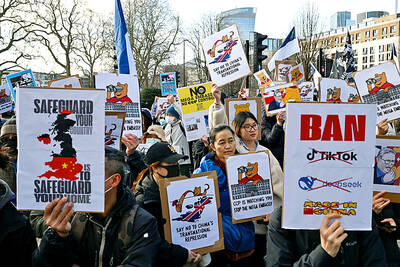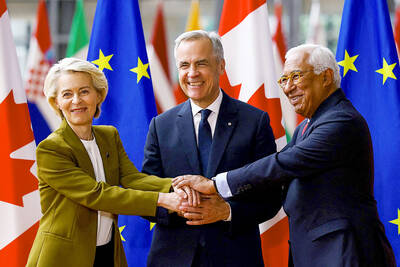Russia’s space agency chief says a spacecraft may be dispatched to knock a large asteroid off course and reduce the chances of earth impact, even though US scientists say such a scenario is unlikely.
Anatoly Perminov told Golos Rossii radio on Wednesday that the space agency would hold a meeting soon to assess a mission to Apophis. He said his agency might eventually invite NASA, the European Space Agency, the Chinese space agency and others to join the project.
When the 270m asteroid was first discovered in 2004, astronomers estimated its chances of smashing into Earth in its first flyby, in 2029, at 1-in-37.
Further studies have ruled out the possibility of an impact in 2029, when the asteroid is expected to come no closer than 29,450km from Earth’s surface, but they indicated a small possibility of a hit on subsequent encounters.
NASA had put the chances that Apophis could hit Earth in 2036 as 1-in-45,000. In October, after researchers recalculated the asteroid’s path, the agency changed its estimate to 1-in-250,000.
NASA said another close encounter in 2068 will involve a 1-in-330,000 chance of impact.
Don Yeomans, of NASA’s Near-Earth Object Program, said better calculations of Apophis’ path in several years “will almost certainly remove any possibility of an Earth collision” in 2036.
“While Apophis is almost certainly not a problem, I am encouraged that the Russian science community is willing to study the various deflection options that would be available in the event of a future Earth threatening encounter by an asteroid,” Yeomans said in an e-mail on Wednesday.
Without mentioning NASA’s conclusions, Perminov said that he heard from a scientist that Apophis is getting closer and may hit the planet.
“I don’t remember exactly, but it seems to me it could hit the Earth by 2032,” Perminov said.
“People’s lives are at stake. We should pay several hundred million dollars and build a system that would allow us to prevent a collision, rather than sit and wait for it to happen and kill hundreds of thousands of people,” he said.
Scientists have long theorized about asteroid deflection strategies. Some have proposed sending a probe to circle around a dangerous asteroid to gradually change its trajectory. Others suggested sending a spacecraft to collide with the asteroid and alter its momentum, or hitting it with nuclear weapons.
Perminov wouldn’t disclose any details of the project, saying they still need to be worked out. But he said the mission wouldn’t require any nuclear explosions.
Hollywood action films Deep Impact and Armageddon have featured space missions scrambling to avoid catastrophic collisions.
In both movies, space crews use nuclear bombs in an attempt to prevent collisions.
“Calculations show that it’s possible to create a special purpose spacecraft within the time we have, which would help avoid the collision,” Perminov said. “The threat of collision can be averted.”
Boris Shustov, the director of the Institute of Astronomy under the Russian Academy of Sciences, hailed Perminov’s statement as a signal that officials had come to recognize the danger posed by asteroids.
“Apophis is just a symbolic example, there are many other dangerous objects we know little about,” he said, according to RIA Novosti news agency.

‘SHORTSIGHTED’: Using aid as leverage is punitive, would not be regarded well among Pacific Island nations and would further open the door for China, an academic said New Zealand has suspended millions of dollars in budget funding to the Cook Islands, it said yesterday, as the relationship between the two constitutionally linked countries continues to deteriorate amid the island group’s deepening ties with China. A spokesperson for New Zealand Minister of Foreign Affairs Winston Peters said in a statement that New Zealand early this month decided to suspend payment of NZ$18.2 million (US$11 million) in core sector support funding for this year and next year as it “relies on a high trust bilateral relationship.” New Zealand and Australia have become increasingly cautious about China’s growing presence in the Pacific

The team behind the long-awaited Vera Rubin Observatory in Chile yesterday published their first images, revealing breathtaking views of star-forming regions as well as distant galaxies. More than two decades in the making, the giant US-funded telescope sits perched at the summit of Cerro Pachon in central Chile, where dark skies and dry air provide ideal conditions for observing the cosmos. One of the debut images is a composite of 678 exposures taken over just seven hours, capturing the Trifid Nebula and the Lagoon Nebula — both several thousand light-years from Earth — glowing in vivid pinks against orange-red backdrops. The new image

ESPIONAGE: The British government’s decision on the proposed embassy hinges on the security of underground data cables, a former diplomat has said A US intervention over China’s proposed new embassy in London has thrown a potential resolution “up in the air,” campaigners have said, amid concerns over the site’s proximity to a sensitive hub of critical communication cables. The furor over a new “super-embassy” on the edge of London’s financial district was reignited last week when the White House said it was “deeply concerned” over potential Chinese access to “the sensitive communications of one of our closest allies.” The Dutch parliament has also raised concerns about Beijing’s ideal location of Royal Mint Court, on the edge of the City of London, which has so

Canada and the EU on Monday signed a defense and security pact as the transatlantic partners seek to better confront Russia, with worries over Washington’s reliability under US President Donald Trump. The deal was announced after a summit in Brussels between Canadian Prime Minister Mark Carney and European Commission President Ursula von der Leyen and European Council President Antonio Costa. “While NATO remains the cornerstone of our collective defense, this partnership will allow us to strengthen our preparedness ... to invest more and to invest smarter,” Costa told a news conference. “It opens new opportunities for companies on both sides of the